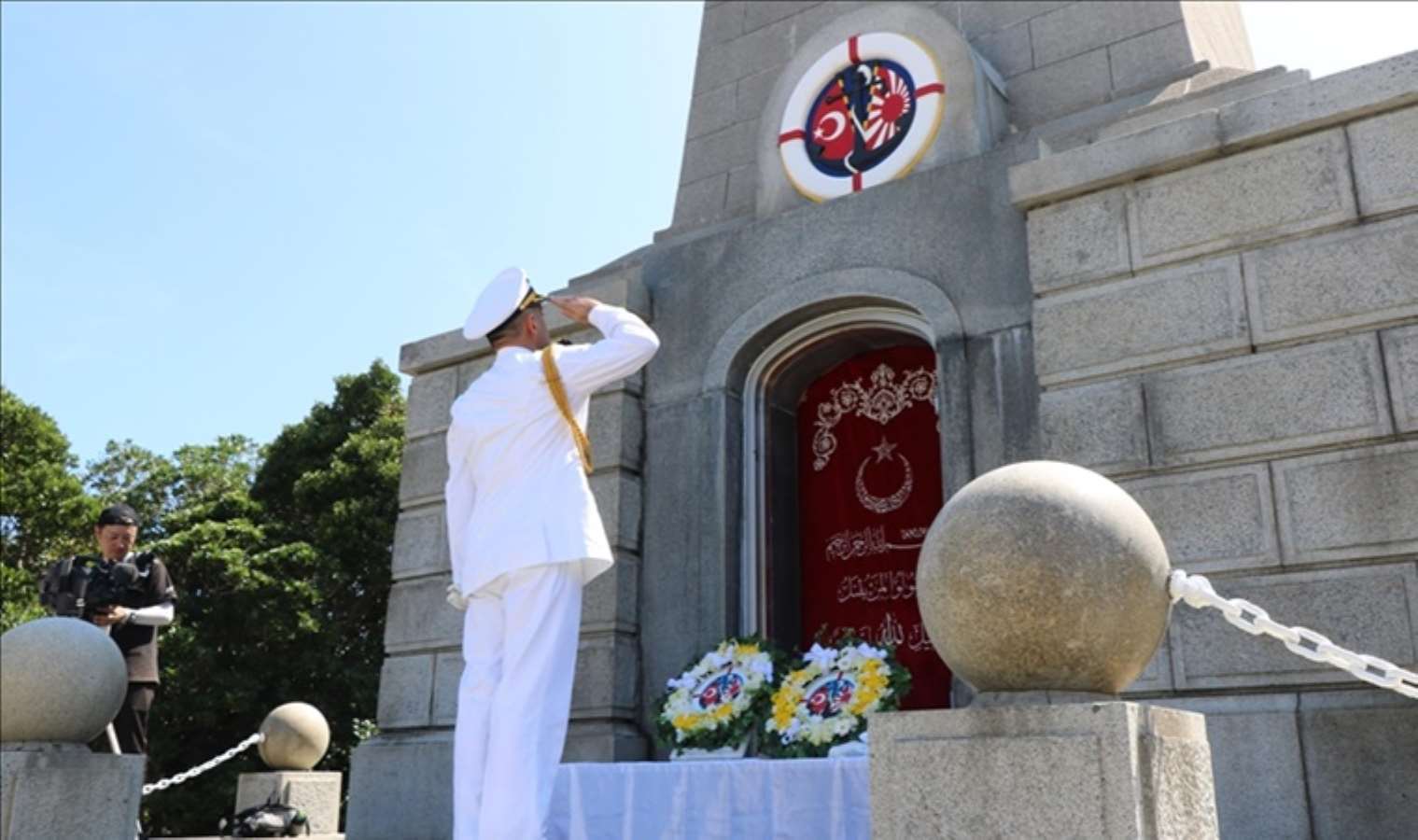Milestone in Turkish-Japanese ties: The tragedy of the Ertugrul Frigate
Ankara, Tokyo set to celebrate centenary of their diplomatic relations in 2024.

It has been 133 years since the sinking of the Ottoman frigate Ertugrul on its return journey from Japan, an event considered a milestone in Turkish-Japanese relations,.
In response to the visit of Japan's Prince Komatsu to Istanbul in October 1887, the Ertugrul was sent to Japan in July 1889, and the following year, it was caught in a typhoon on its return journey.
When the Ertugrul Frigate hit the rocks off Kushimoto on the evening of Sept. 16, 1890, only 69 sailors survived, while more than 500 Ottoman mariners lost their lives.
The sorrowful story of the return visit is considered the beginning of diplomatic relations between the two countries, and the spiritual legacy of the sunken frigate and its marines has been kept alive in the hearts of the two countries' people for 133 years.
Only 69 sailors survived accident
The Ertugrul Frigate, in the first organized diplomatic mission from the Islamic world to Japan, departed from Istanbul in July 1889 with a total crew of 609.
The frigate made stops at Suez, Aden, Bombay (Mumbai), Colombo, Singapore, Hong Kong, Fukuoka, Nagasaki, and Kobe, and arrived in Yokohama on the eastern side of Tokyo after an 11-month journey.
The head of the delegation, Ali Osman Pasha, was accepted by Japan’s Emperor Meiji, and presented him a letter and medal sent by Ottoman Sultan Abdulhamid II.
After taking part in numerous meetings, the Ottoman delegation departed from Yokohama on Sept. 15, 1890.
Japan's harsh September typhoons
As the Ertugrul sailed south of Honshu Island, it reached the waters off Kushimoto in the Wakayama Prefecture on the evening of Sept. 16, 1890.
The frigate, caught in the September typhoons that hit southern Japan every year near Cape Shionomiseki and Kii Oshima Island, drifted and collided with the rocks, breaking into pieces and sinking into the waters of the Pacific Ocean.
Historical sources record that only 69 sailors survived the accident, while more than 500 Ottoman officers lost their lives.
Annual ceremonies in Kushimoto
On Oct. 10, 1890, on the warships Hiei and Kongo, the Japanese government delivered the survivors of the accident to the historically important Turkish province of Canakkale.
Unable to enter Istanbul due to the 1878 Berlin Treaty, the ships delivered the marines to the Ottoman warship Talia.
After waiting at the port of Izmir for some time, the Hiei and Kongo got special permission to enter Istanbul Port in January 1891.
As guests of the Ottoman state, the Hiei and Kongo stayed here for about a month, then left Istanbul in February and returned to Japan three months later.
While the mournful legacy of the Ertugrul is considered a milestone in Ankara-Tokyo relations, in 1891 a monument was erected in Kushimoto, where the accident occurred, to honor the victims of the wreck.
Annual commemoration ceremonies are held in front of the monument, which Turkey restored in 1937.
The Turkish Museum, built in 1974, contains a model of the Ertugrul Frigate, photos of the soldiers and commanders on board, and sculptures.
The centenary of diplomatic relations between the Republic of Turkey and Japan will be celebrated in 2024.
The memory of the surviving Ottoman sailors being brought ashore by local villagers and the Japanese authorities' aid campaigns for their families has not faded.
Nearly a hundred years after the sinking of the Ertugrul, Turkish Airlines' transportation in 1985 of many Japanese citizens stranded in Tehran during the Iran-Iraq war is also remembered as a landmark event in bilateral relations.
Turkey and Japan consider these two historical events turning points in their mutual relations.

En Çok Okunan Haberler
-
 İstanbul'da zincirleme kaza
İstanbul'da zincirleme kaza
-
 Polis meslektaşlarına ateş etti
Polis meslektaşlarına ateş etti
-
 En yüksek faizi hangi banka veriyor?
En yüksek faizi hangi banka veriyor?
-
 Mert Hakan Yandaş'dan sosyal medyada çok sert tepki!
Mert Hakan Yandaş'dan sosyal medyada çok sert tepki!
-
 Müsavat Dervişoğlu İYİ Parti Genel Başkanı oldu
Müsavat Dervişoğlu İYİ Parti Genel Başkanı oldu
-
 Kuryeden ‘görev tamam’ pozu!
Kuryeden ‘görev tamam’ pozu!
-
 Yıllar sonra gelen itiraf: 'Onlar varsa oynamam dedim'
Yıllar sonra gelen itiraf: 'Onlar varsa oynamam dedim'
-
 'Hiçbir şey eskisi gibi olmayacak'
'Hiçbir şey eskisi gibi olmayacak'
-
 İYİ Parti'de tarihi kurultay: Seçim üçüncü tura kaldı!
İYİ Parti'de tarihi kurultay: Seçim üçüncü tura kaldı!
-
 CHP lideri Özel'den ilk açıklama!
CHP lideri Özel'den ilk açıklama!

















